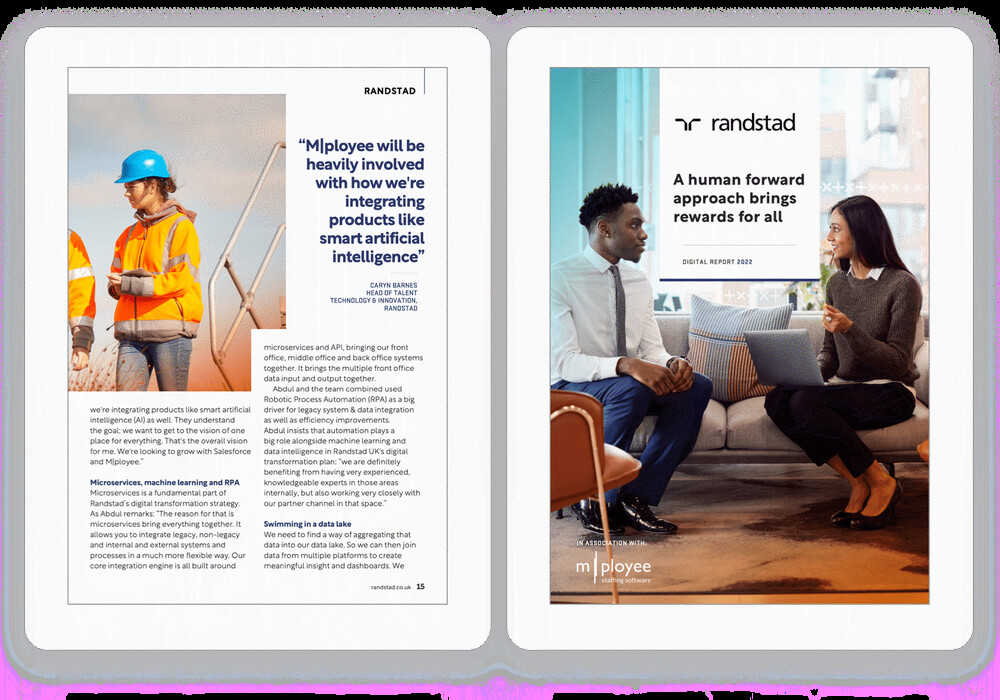Many of you will already have heard this news, but for those new to myself and Mployee, I’m pleased to share that we have now launched the Staffing RecOps Podcast – and there have already been some brilliant guests.

In the first podcast, I spoke to Chris Howe, Operations Director at Staffing Match to gather his views on onboarding and retention in the contingent workforce. As a business that can have anywhere upwards of 2,500 contingent workers out at any time, Chris and his teams are certainly well placed to share insight into how to best engage and manage this workforce.
I found it really interesting to hear the firm’s experience over recent years, echoing the sentiment that many of us saw in the recruitment sector in a post-Covid landscape, namely that there was an influx of labour availability once borders reopened after the pandemic.
But we are in a completely different environment once again and things are getting tougher for recruiters. Effectively attracting and managing contingent staff across a range of sectors is going to become increasingly difficult as these individuals demand better pay and conditions while end clients find budgets being continuously restricted.
For recruiters, keeping contingent workers happy needs to be prioritized, and onboarding, retention and reskilling will have a key role to play in achieving this.
Improving onboarding
I have to admit, hearing Chris’ views was both refreshing and welcoming in that he shared many of my thoughts as well. I completely agree that onboarding is crucial and is perhaps one of the most important elements of a recruiter’s role when managing contingent staff. These people are the biggest commodity for an agency and failing to onboard efficiently has the potential to cause a range of issues.
Speed is of the essence within this labor force – after all, their time is money, waste it and they won’t want to engage with you or your clients again. Add to this the sheer volume of the resources being onboarded in one go and it’s no surprise that the process can be easily broken.
The move to better use of technology has been a natural progression in onboarding and managing the contingent workforce and, as Chris highlighted, in a Covid-hit environment, it became a critical element of the management of these resources. However, what perhaps is surprising for some – but also arguably welcome for others – is that Staffing Match has begun to move back to the more traditional method of individualized team approaches rather than a more widely tech-reliant and centralized resource for onboarding.
It’s important to really hone in on the reasons for this, and that’s largely the need for the human element in the process. Technology is an enabler for recruiters onboarding contingent resources, but as a people business, a balance definitely needs to be struck between people and tech, with both supporting each other.
Reducing churn
I think one issue that is often easy to overlook is that of churn during the onboarding stages and Chris’ points on this issue throughout the podcast were hugely valuable (though you’ll have to listen to the recording yourself if you want to hear the full details).
Given the high volume hiring that is often associated with blue collar recruitment, everything can be a bit of a numbers game. You may have a 20% churn of workers at this stage, but out of over 2,500 contingent workers, how much of this impact is really felt in the business. I’d argue that we are increasingly seeing push back from the contingent market, with workers voting with their feet if they have a negative experience. Demand for resources remains high and staff know this. Treating them as numbers will only increase churn and reduce longer-term retention of the most valuable asset to your business.
Upskilling for retention
The topic of upskilling is something I’ve previously touched on. You can read the full article here, but in essence, developing the contingent workforce is becoming a more commonly debated topic. It was interesting to hear from Chris that he is seeing more end clients also prioritise the skills development of the contingent labor market – not just for the sake of filling skills gaps as I had previously suggested, but also for the benefit of retention.
Treating contingent workers fairly and in a similar way to permanent resources is becoming the norm, and everyone involved in the recruitment of these resources needs to be on board with this.
I found the conversation with Chris extremely insightful and I have a number of other brilliant speakers lined up for future podcasts who I can’t wait to hear from. And, as he highlighted, while recruiters may be competitors with each other, there’s also room for us all to share and collaborate with each other for the benefit of the staffing sector, its clients and perhaps more importantly, the contingent workers whose lives are so impacted by recruitment agencies – advice I shall certainly continue to follow.
Listen to the first episode of the podcast to hear more from myself and Chris and don’t forget to keep checking back for new episodes of the Staffing RecOps Podcast!



